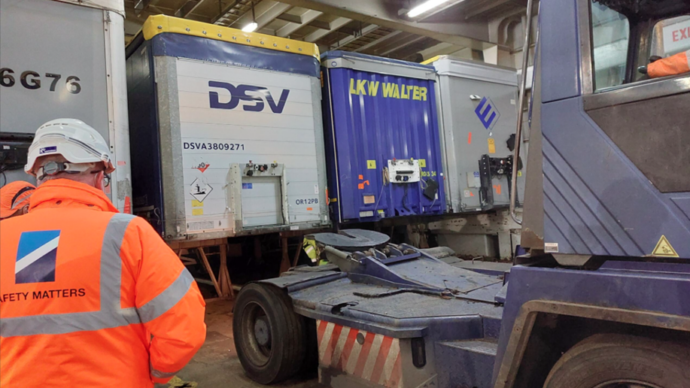NEWS
Risks and challenges for ports working with hauliers
Campaigns |Published: Dec 2, 2024

For almost all ports, working with hauliers is essential, but as with any third party, they bring a unique set of risks and challenges which can impact both the operational efficiency of the port and the effectiveness of the hauliers’ operations. Below is a more detailed expansion on each of these potential issues and over the course of the campaign week PSS will investigate how to mitigate them.
Delays and congestion
Ports often experience heavy congestion due to the sheer volume of goods being handled, particularly in busy periods or during peak seasons. Congestion can cause significant delays in loading and unloading, which in turn will affect the schedules of ships and hauliers. There is a risk that hauliers may then attempt to speed up operations or take shortcuts to make up for lost time. This can compromise safety standards and lead to errors in cargo handling, which lead to further delays.
Customs and regulatory compliance
Navigating customs procedures and regulatory compliance at ports is one of the most complex aspects of haulage operations. Hauliers must ensure that all documentation, including customs declarations and import/export permits, is completed accurately and on time. Any errors or delays in this paperwork can result in significant penalties, including fines, and lead to customs hold-ups that delay delivery schedules. Hauliers must be well-versed in both national and international regulations to avoid these risks. Hauliers who do not always operate on the same international routes or speak English fluently, may find this channelling and distracting and attempt to circumvent procedures within the port.
Safety and security concerns
Ports are inherently busy and often hazardous environments, with high volumes of vehicles, machinery, and goods moving at any given time. Hauliers may not transit the same ports and therefore be unaware of the safety concerns of any one port. Security is another major concern for hauliers as theft or damage to goods while in transit can lead to further delays and penalties. Hauliers and port authorities must work together to ensure there are stringent safety and security measures in place to mitigate these risks. This may include implementing surveillance, employing security personnel, and enforcing strict access control systems.
Infrastructure and equipment issues
Good port infrastructure, such as well-maintained roads, adequate signage and correct plant and equipment, can make a huge difference in ensuring smooth haulier operations. Ports can assist hauliers by ensuring navigation around the ports works for third parties as well as port operations. Maintaining and upgrading port infrastructure to meet the needs of both the port and hauliers is critical for reducing delays and improving safety.
Environmental regulations
With increasing global attention on sustainability, hauliers are required to comply with various environmental regulations, including those related to emissions and the use of cleaner fuel alternatives. Ports can assist hauliers to avoid non-compliance penalties by ensuring environmental regulations or polices such as low emissions zones are clearly communicated to hauliers.
Communication and coordination
Effective communication between ports and hauliers is critical for smooth operations and avoid unnecessary delays. For example, if hauliers are not made aware of changes to operational procedures or safety protocols, they may inadvertently cause disruptions. Clear, consistent, and timely communication is essential to ensure all parties are on the same page. Many ports are adopting digital platforms or apps to enhance communication, providing real-time updates to hauliers regarding scheduling, customs processing, and safety procedures.
Addressing these risks
To mitigate the risks outlined above, ports and hauliers must engage in proactive planning, collaboration, and communication. Effective management of operations, along with comprehensive training for hauliers on safety and regulatory compliance, is essential. Investing in infrastructure and technology will improve operational efficiency, as will ensuring consistent lines of communications. Additionally, regular feedback from hauliers can help identify persistent challenges, allowing ports to implement solutions that improve overall working conditions and safety for all involved.
By addressing these challenges head-on, ports and hauliers can work together to enhance operational efficiency, reduce delays, and improve safety for everyone working within and around the port.
Resources
Health and Safety Executive (HSE) – traffic management
The HSE outlines safety standards and best practices for traffic management in port environments, including how to mitigate risks related to operational delays and congestion.
https://www.hse.gov.uk/treework/site-management/traffic.htm
SiP010 Guidance on Ro-Ro and Sto-Ro operations
This SiP provides safety practices for ro-ro and sto-ro operations. It highlights key areas such as vehicle movement control, cargo securing, and worker safety protocols. The document is aimed at supporting ports in maintaining efficient and safe operations by addressing common risks and promoting best practices in high-traffic environments.
SiP010 Guidance on ro-ro and sto-ro operations
